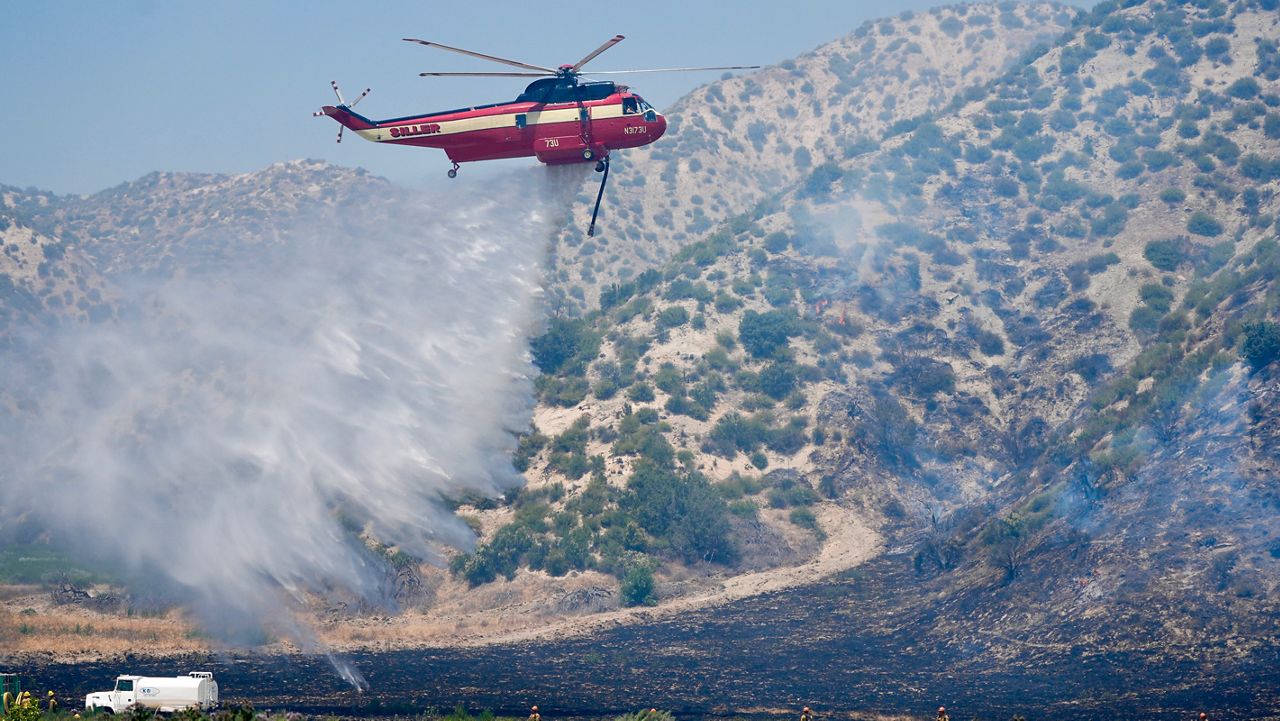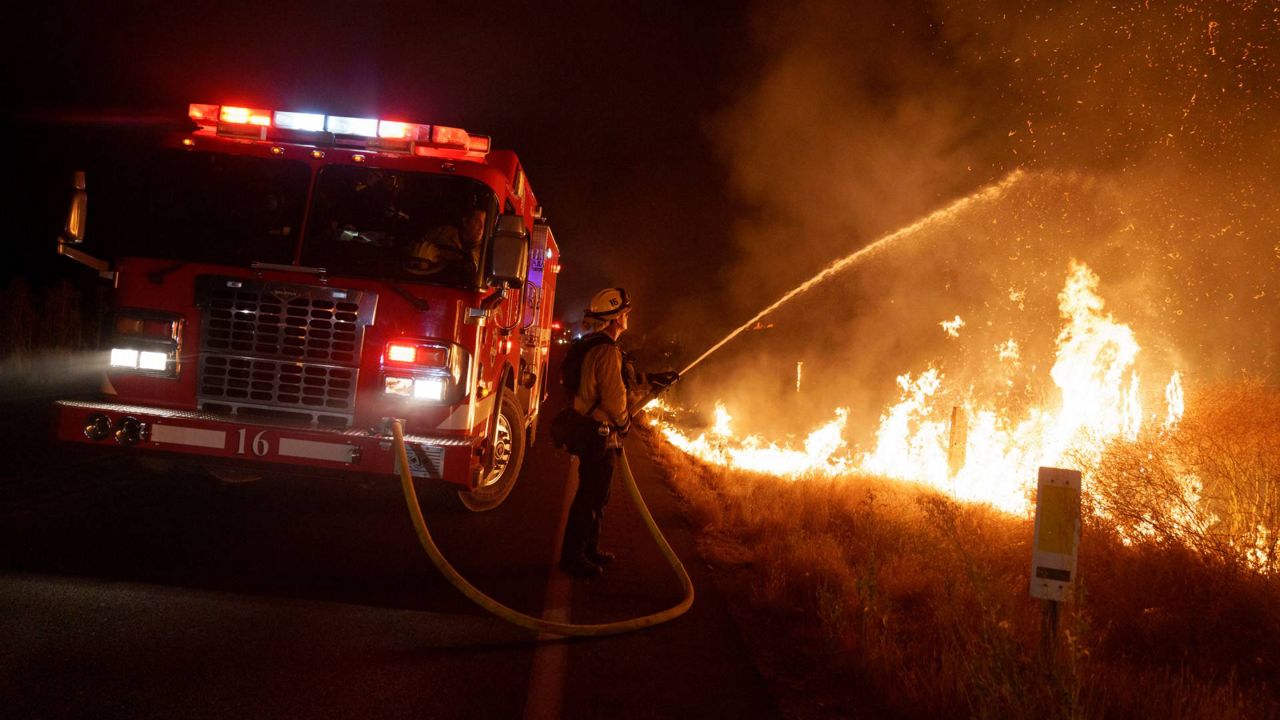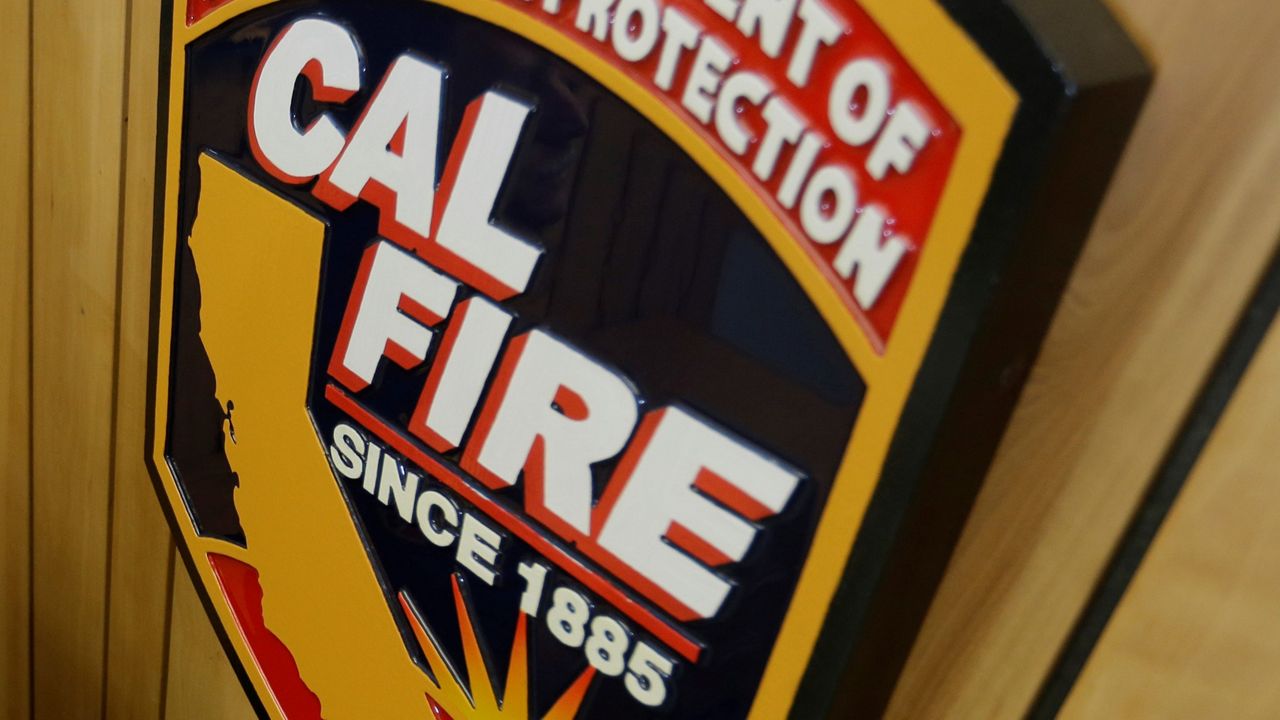SACRAMENTO, Calif. (AP) — Pacific Gas & Electric power lines sparked last summer's Dixie Fire in Northern California that swept through five counties and burned more than 1,300 homes and other buildings, state fire officials said Tuesday.
The blaze was caused by a tree hitting electrical distribution lines west of a dam in the Sierra Nevada, where the blaze began on July 13, according to investigators with the California Department of Forestry and Fire Protection.
What You Need To Know
- State fire officials say Pacific Gas & Electric power lines sparked last summer’s Dixie Fire in Northern California
- The fire swept through five counties and burned more than 1,300 homes and other buildings
- Cal Fire said that the Dixie Fire began last July after a tree hit electrical distribution lines in the Sierra Nevada
- PG&E already had said its equipment may have been involved and it's facing legal action for other fires
The finding was no surprise. PG&E already had indicated its equipment may have been involved in the Dixie Fire, which burned nearly 1 million acres (3,900 square kilometers) in Butte, Plumas, Lassen, Shasta, and Tehama counties.
It was the second-largest fire in state history and the latest of several of California's largest and deadliest blazes to be blamed PG&E equipment over the last decade.
"This tree was one of more than 8 million trees within strike distance to PG&E lines," PG&E said in a statement. "Regardless of today's finding, we will continue to be tenacious in our efforts to stop fire ignitions from our equipment and to ensure that everyone and everything is always safe."
PG&E also touted its plan, announced in July, to bury about 10,000 miles (16,100 kilometers) of its distribution and transmission lines at a projected cost of $15 billion to as much as $30 billion. CEO "Patti" Poppe's announcement came just days after the utility alerted regulators to the company's possible involvement in the Dixie Fire.
Previous PG&E regimes have staunchly resisted plans to bury long stretches of power lines because of the massive expense, most of which will be shouldered by customers.
PG&E said only that burying the lines will take several years, but getting the job done within the next decade would require a quantum leap. In the few areas where PG&E has already been burying power lines, it has completed about 70 miles (123 kilometers) annually.
In the shorter term, the utility has taken to pre-emptively shutting off power to thousands — and in one case, millions — of customers during periods of hot, dry weather coupled with high winds that can knock down trees or hurl branches into power lines.
PG&E equipment has been blamed for several of California's deadliest wildfires in recent years at the same time as drought and heat waves tied to climate change have made wildfires fiercer and harder to fight in the American West.
Last September, PG&E was charged with involuntary manslaughter and other crimes because its equipment sparked the Zogg Fire in September 2020 that killed four people and burned about 200 homes west of Redding. Investigators blamed a pine tree that fell onto a PG&E distribution line. The company could be heavily fined if convicted.
Shasta and Tehama counties have sued the utility alleging negligence, saying PG&E had failed to remove the tree even though it had been marked for removal two years earlier. The utility said the tree was subsequently cleared to stay.
It was one in a slew of legal actions against the nation's largest utility, which has an estimated 16 million customers in central and Northern California.
The utility pleaded guilty in 2019 to 84 counts of involuntary manslaughter for a 2018 blaze ignited by its long-neglected electrical grid that nearly destroyed the town of Paradise and became the deadliest U.S. wildfire in a century.
PG&E also filed for bankruptcy protection in 2019 after that blaze and others were blamed on its aging equipment. The utility emerged from bankruptcy in 2020 and negotiated a $13.5 billion settlement with some wildfire victims.
But it still faces both civil and criminal actions from other fires. The company has pleaded not guilty to Sonoma County criminal charges over the 2019 Kincade Fire, which injured six firefighters, choked local skies for two weeks and forced nearly 200,000 residents from their homes.
Last fall, PG&E reached a $125 million settlement agreement with the California Public Utilities Commission over that fire.
Cal Fire said Tuesday that its investigative report on the Dixie Fire was sent to the Butte County district attorney's office, which will determine whether criminal charges should be filed.









